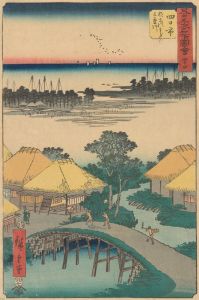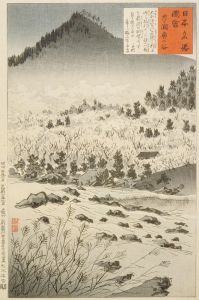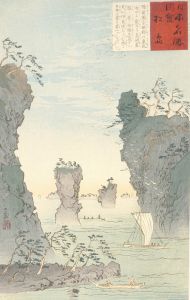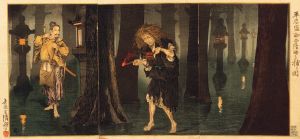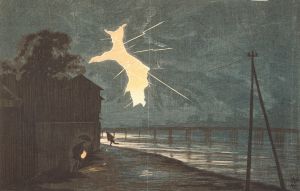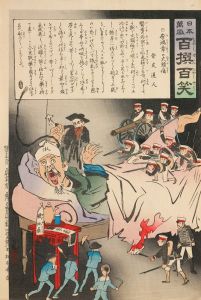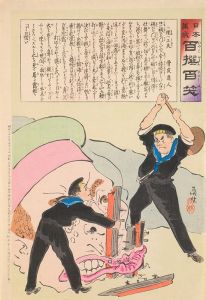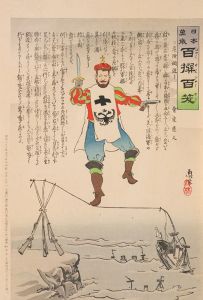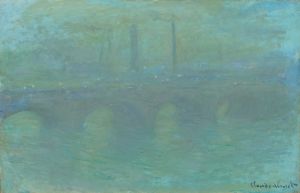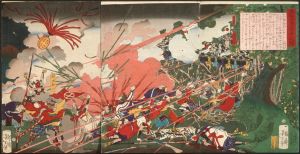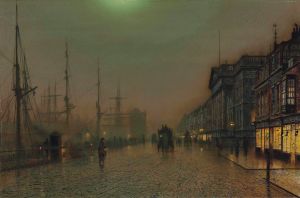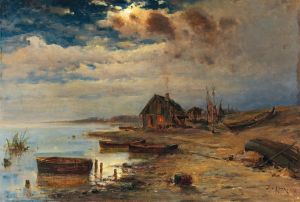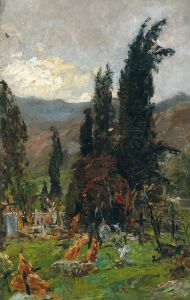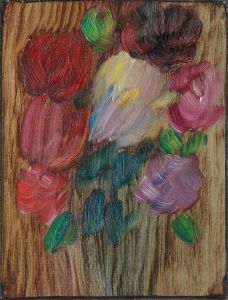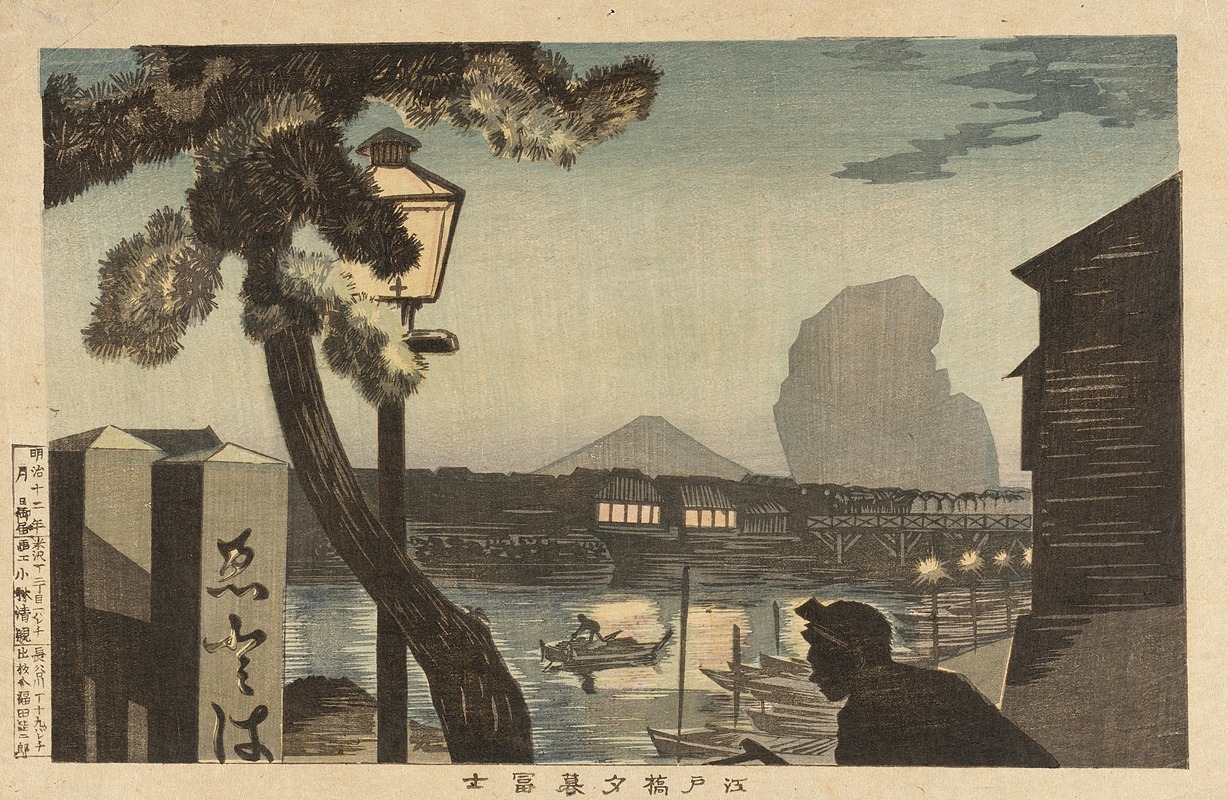
Mt. Fuji at Dusk from Edo Bridge
A hand-painted replica of Kobayashi Kiyochika’s masterpiece Mt. Fuji at Dusk from Edo Bridge, meticulously crafted by professional artists to capture the true essence of the original. Each piece is created with museum-quality canvas and rare mineral pigments, carefully painted by experienced artists with delicate brushstrokes and rich, layered colors to perfectly recreate the texture of the original artwork. Unlike machine-printed reproductions, this hand-painted version brings the painting to life, infused with the artist’s emotions and skill in every stroke. Whether for personal collection or home decoration, it instantly elevates the artistic atmosphere of any space.
"Mt. Fuji at Dusk from Edo Bridge" is a woodblock print created by Kobayashi Kiyochika, a prominent Japanese artist of the Meiji era (1868–1912). Kiyochika is widely recognized for his innovative approach to ukiyo-e, a traditional Japanese art form that flourished during the Edo period. His works often reflect the rapid modernization and Westernization of Japan during the late 19th century, blending traditional Japanese aesthetics with Western techniques such as perspective and chiaroscuro.
This particular print is part of Kiyochika's celebrated series of landscape works, which frequently depict urban and natural scenes illuminated by dramatic lighting effects. "Mt. Fuji at Dusk from Edo Bridge" captures the iconic Mount Fuji as seen from Edo Bridge, a location in what is now modern-day Tokyo. The scene is set during dusk, a time of day that Kiyochika often used to explore the interplay of light and shadow. The print showcases his mastery of atmospheric effects, with subtle gradations of color and tone that evoke the quiet, reflective mood of twilight.
Kiyochika's work is notable for its departure from the more vibrant and decorative style of earlier ukiyo-e masters like Hokusai and Hiroshige. Instead, he adopted a more subdued and realistic palette, which was influenced by Western art and photography. This stylistic shift is evident in "Mt. Fuji at Dusk from Edo Bridge," where the muted colors and careful attention to detail create a sense of depth and realism.
The print also reflects the cultural and historical context of the Meiji era, a time when Japan was undergoing significant transformation. The inclusion of Mount Fuji, a symbol of Japan's enduring natural beauty and cultural heritage, juxtaposed with the urban setting of Edo Bridge, underscores the coexistence of tradition and modernity during this period.
Kiyochika's works, including "Mt. Fuji at Dusk from Edo Bridge," are considered important contributions to the evolution of Japanese art. They document the changing landscapes and societal shifts of Meiji-era Japan while preserving the essence of traditional ukiyo-e. Today, his prints are highly regarded by art historians and collectors, and they are featured in major museum collections around the world.
Further details about the specific date of creation or the exact series to which this print belongs are not readily available. However, it remains a representative example of Kiyochika's artistic vision and his ability to capture the fleeting beauty of light and atmosphere.





